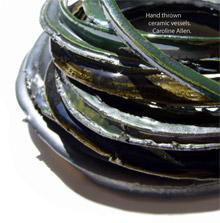Maikel Kuijpers (University of Cambridge)
With the conference’s focus is on creativity, no doubt we will see many examples of imaginative, elaborate, innovative and possibly unique Bronze Age objects pass the screen. This might give the impression that creativity is what happens when people are liberated from the constraints of conventionality. However, creativity does not come out of the blue. In contrast, the American poet Hirshfield (1998) argues that in order to be creative “a knowledge of tradition, perversely, helps.”
To counter-balance a focus on the creative one-offs, a prehistory of serendipity, I would like to focus on the fundament of creativity; repetition. Using Early Bronze Age axes as an example I will argue that the craftsperson learns by copying, masters by repetition and is creative by experience and taking risk. This has much more in common with the second term used in the title of the CinBA project, namely craft. I will argue that craft and creativity are inextricably bound up and, moreover, that creativity is a by-product of mastery. In other words, you need experience in order to know the (societal) rules of the material, and you need to be experienced in order to successfully diverge from them.


